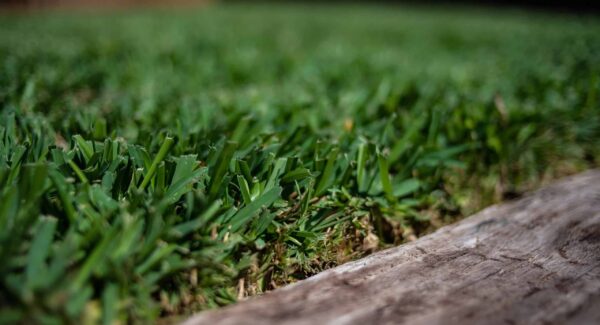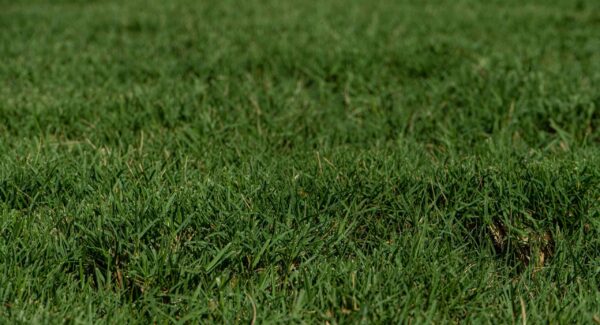The Polar Vortex And Your Lawn
The start of 2014 has sent waves of arctic air through our nation. Various cities are experiencing record low temperatures everyday as the so called polar vortex threatens the health of pets, exposed skin and lawns. Did you hear that? Lawns are being threatened! Especially here in Texas where the health of lawns is usually already weakened by drought, extreme weather can cause some real damage. So what can you do? The number one thing you can do to prepare your lawn for any extremes is consistently care for it properly throughout the year. A little freeze is no match for an otherwise strong and healthy lawn. However there are a couple of other steps you can take to prepare your turf for winter.

Putting Your Lawn To Bed
During the winter there won’t be a lot that you can do for your lawn. Almost all varieties of grass go dormant in the winter and accordingly require very little care. Don’t worry, spring will come again! Essentially grass hibernates in the winter and reawakens in the spring. There are a few things you can do to lower your grass’s risk of disease or damage during the fall in preparation for the winter cold. Remember that how beautiful your spring lawn is is determined the fall before. So put your lawn to bed right, and tuck it in tight!
-
Remember that the best winter grass is short grass! Slowly begin lowering the length of your grass during the fall. Do it by a .5” at a time. Longer grass can smother itself over the course of winter. It is also at greater risk for disease during thawing and freezing. However be careful not to expose the crown of the blade. Doing this will leave your lawn vulnerable.
-
As winter approaches you will need to reduce your watering and cutting. Your grass will need less of both during this time.
-
Consider aerating your soil. Aerating your lawn helps oxygen and nutrients reach your grass’s roots much more easily. You can rent an aerator for a certain daily price.
-
Be sure to regularly rake any leaves that pile up. Leaves can harbour fungus and put your lawn at risk for diseases like snow mold (see below for more information).
-
Fill in any bare spots and reseed your lawn if necessary. Fall is the best time to do this.
General Winter Lawn Care Tips
So now you know how to prepare your lawn for the harshness of winter, but is there nothing you can do for it the entire season? If you’re just itching to maintain lawn care throughout winter then try helping your lawn by doing the following:
-
Before a snowfall be sure to remove and debris on your lawn. The snow can bury it and discourage growth and cause moss to develop. This means sticks, any leftover leaves, tools or rocks.
-
Foot traffic over snow covered grass is usually completely safe. Beware of foot traffic on exposed dormant grass. Without the protection of snow it can wear unsightly paths.
-
Relax. You’d be surprised at how resilient your turf is. When a lawn freezes over it can remain so for up to a month before you need to worry about it’s health.
Prepare Your Tools
There are a couple of other things you may need to do in preparation for winter like winterizing your mower and irrigation system. The tools you use to take care of your lawn need care too! During the winter you will not use your lawn mower the same way you do in other seasons. It’s important to prepare it for this period of dormancy by:
-
Emptying the fuel tank and running the mower until it is completely dry.
-
Changing the oil.
-
Cleaning the engine.
-
If necessary, replace the blade. You don’t want to start a new season dull!
You want to be sure when the time comes that your mower is ready to mow! For tips on winterizing your hose and sprinkler system please see our other Grass care tips.
Snow Mold
There are several fungal infections and diseases that threaten your grass during the winter season. The most common of all is snow mold, a disease that can affect almost any type of grass. While the name implies that snow is a necessary circumstance to the development of the mold, snow mold can actually affect a lawn that is exposed to cold, murky and moist weather without snow for an extended period of time. There are actually two different types of snow mold disease known as Grey Snow Mold and Pink Snow Mold. Although the symptoms may appear the same, they affect the grass in different ways. Snow mold will often bring about the following symptoms:
-
Greyish circular patches.
-
Grass may appear “matted” or clumped together.
-
There may be a grey or pink tinted “web” of what is actually a mold like material over the tops of the discolored patches of grass.
There are some simple ways to reduce your risk of experiencing snow mold.
-
If possible keep snow off your lawn for extended periods of time.
-
Do not allow leaves to pile up in the fall as this can also cause the disease.
-
Avoid using nitrogen fertilizers in the fall.
-
Keep your thatch levels low.
-
Keep your grass short and trimmed before winter.
If you do experience snow mold, rest easy. In many cases the disease actually goes away on its own after the temperature rises. However if the temperature stays below 30 for a longer period of time after the disease has set in you may need to employ a fungicide to help get rid of the mold. Some of these fungicides can also help prevent it in the first place. However because the damage of snow mold is usually temporary they should be used as a last resort.
The Grass Outlet is here to help repair any damage this polar vortex may cause your lawn! We wish you luck in your winter lawn care ventures and hope you stay warm!





